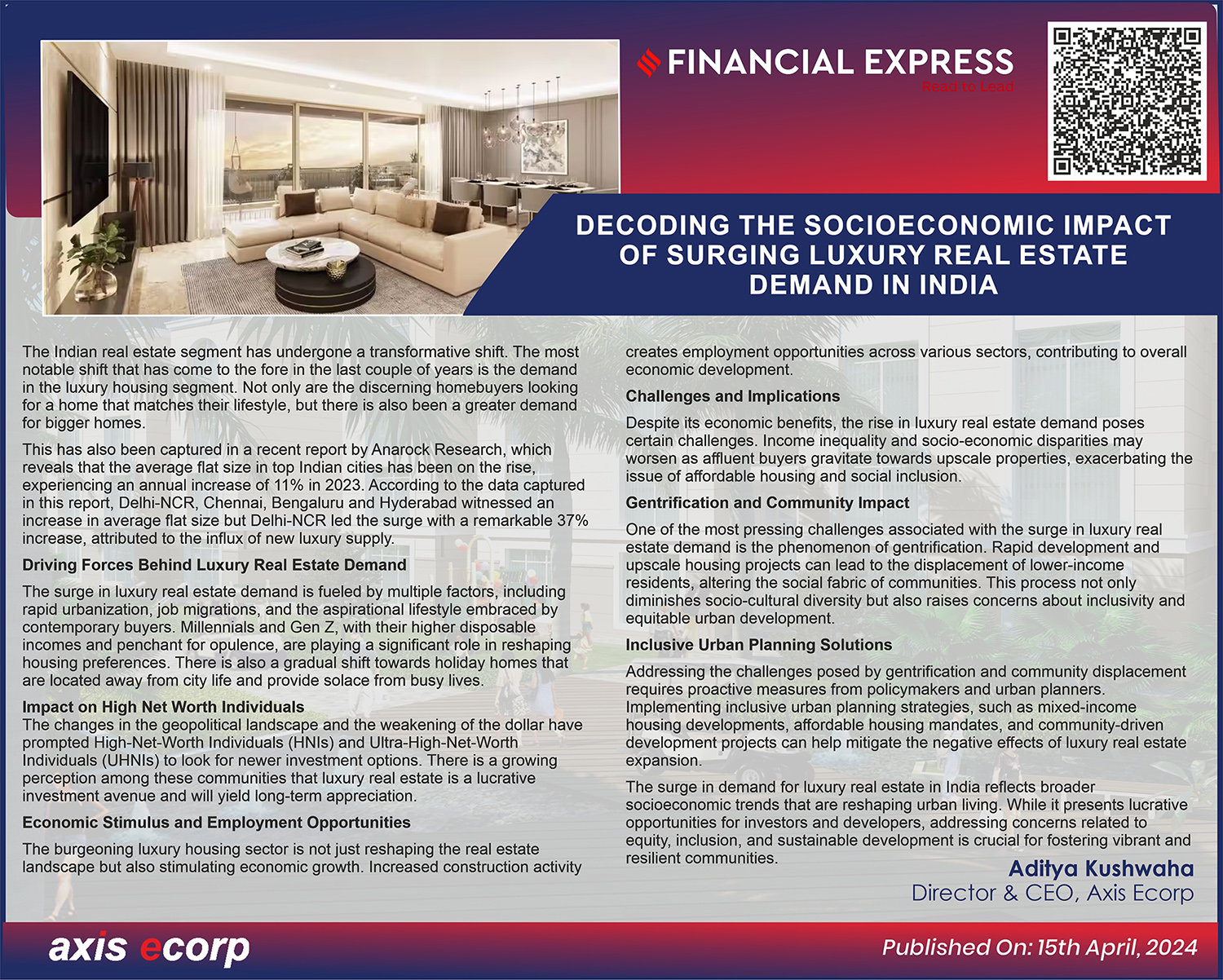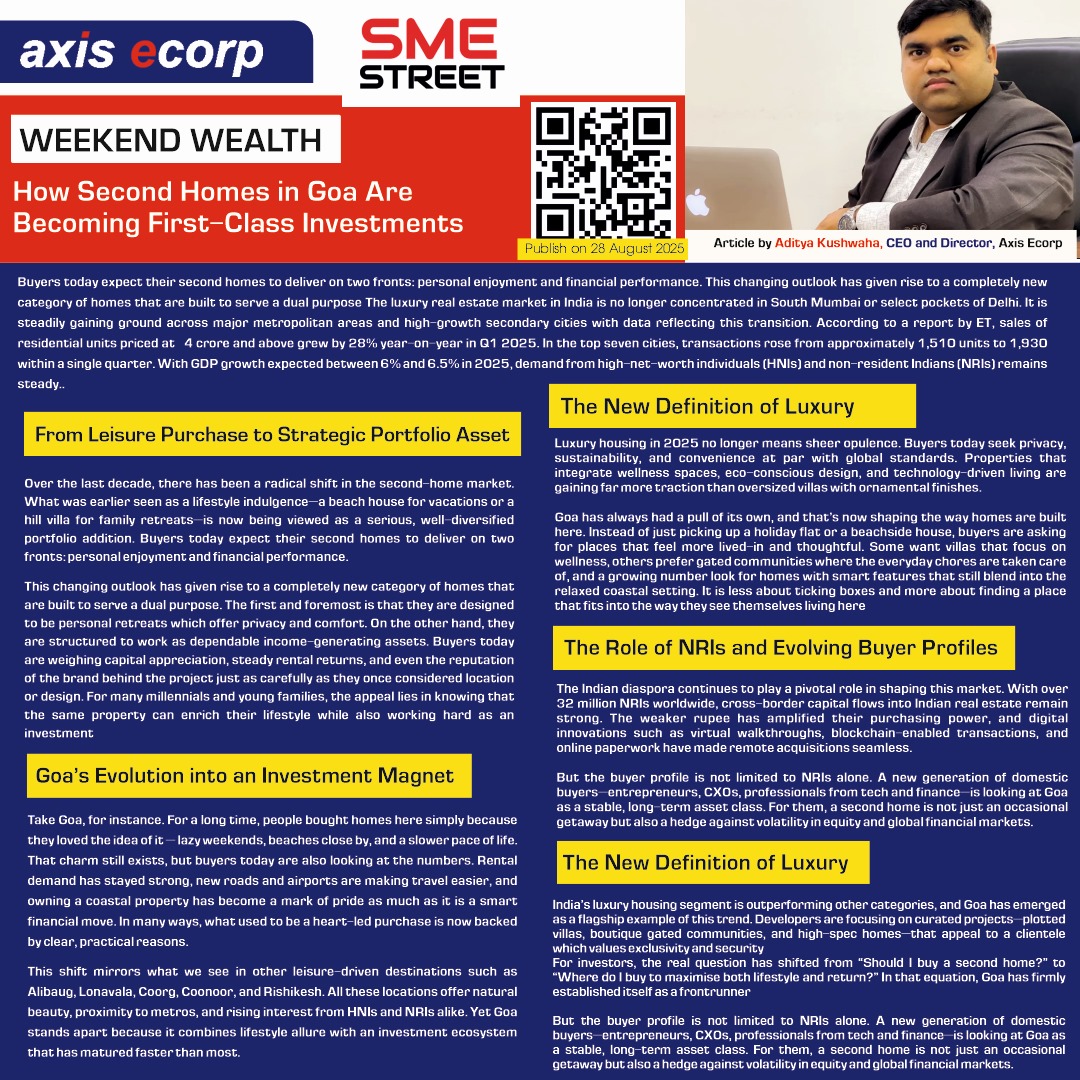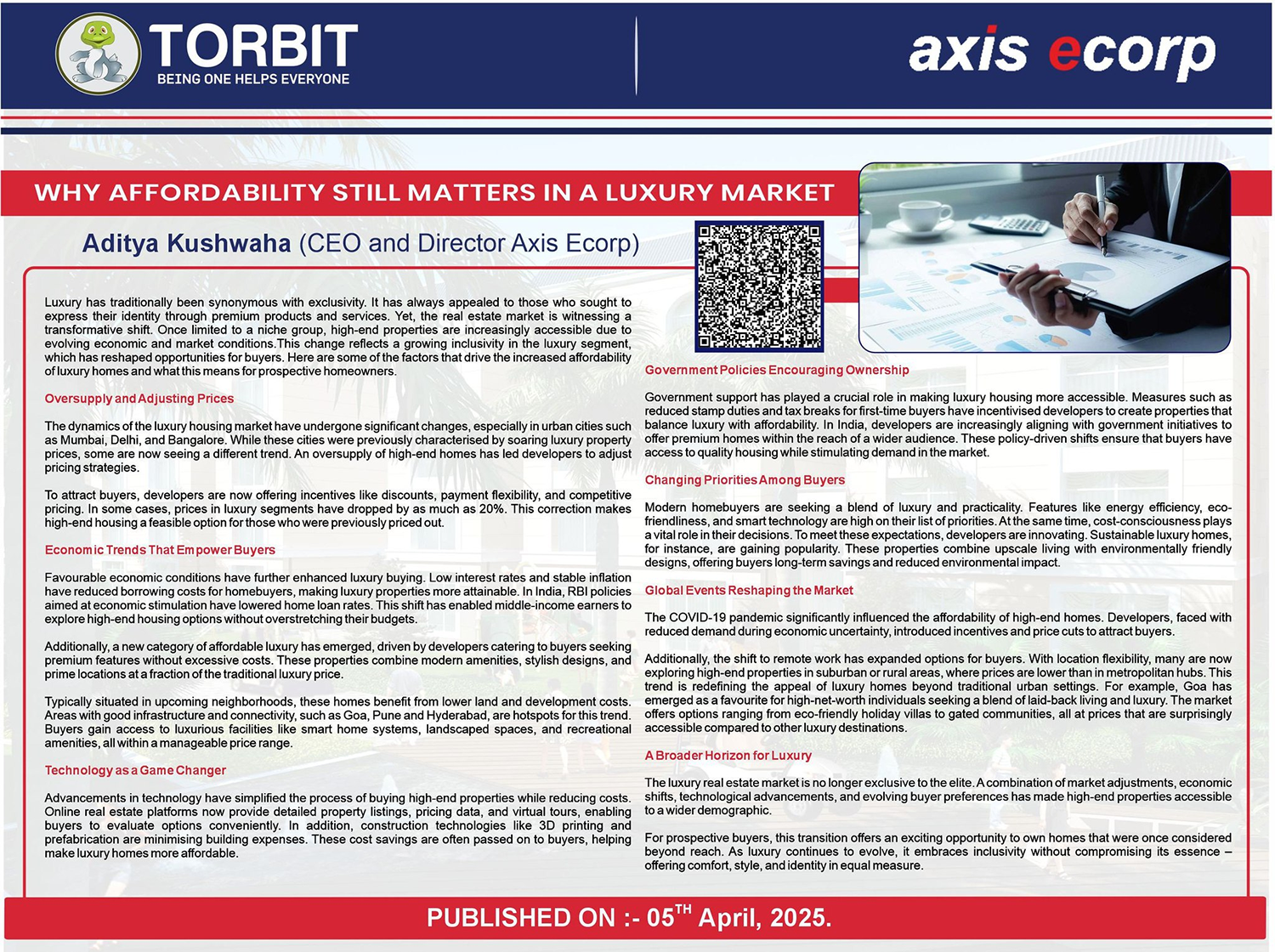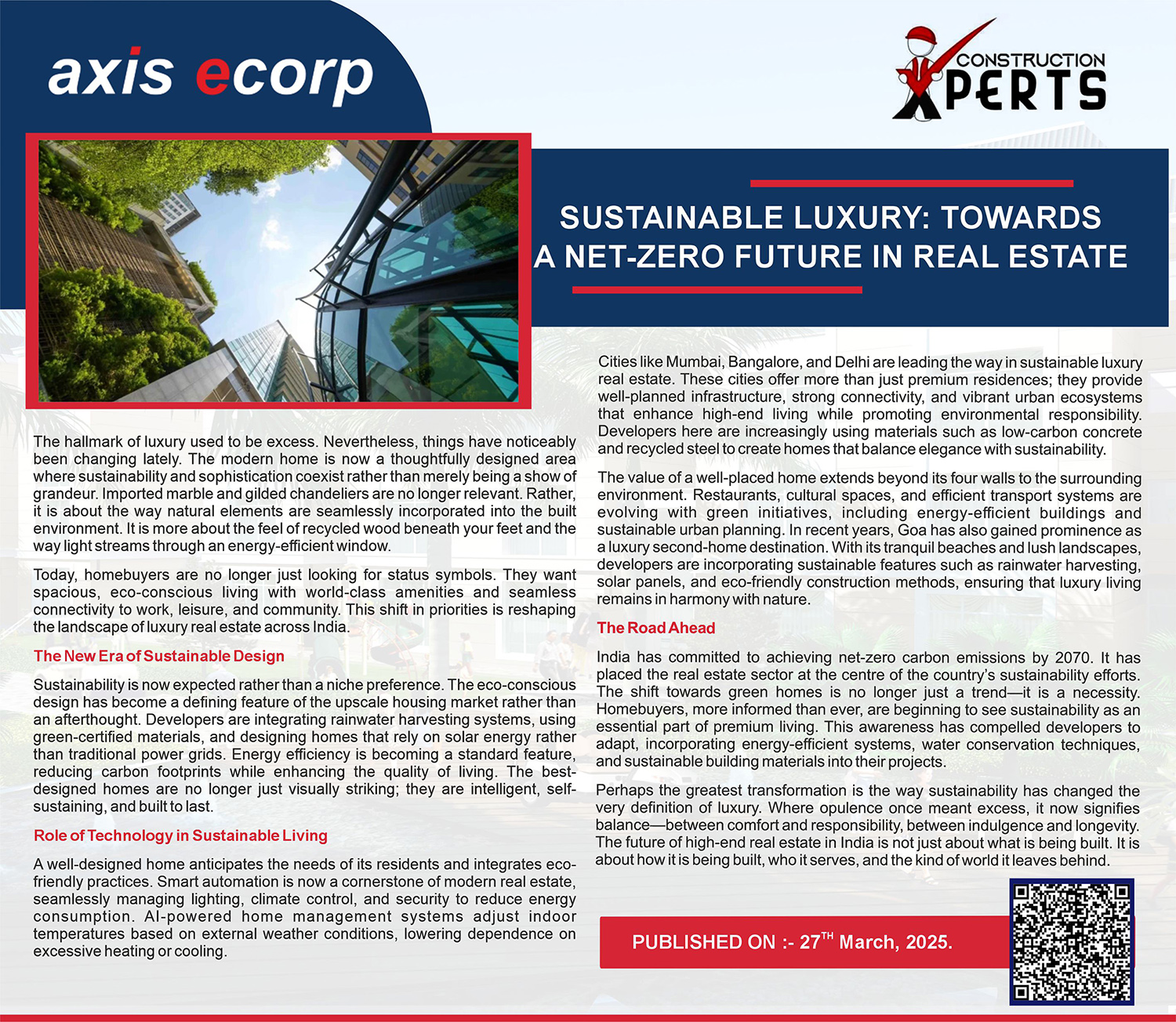Decoding the socioeconomic impact of surging luxury real estate demand in India

The Indian real estate segment has undergone a transformative shift. The most notable shift that has come to the fore in the last couple of years is the demand in the luxury housing segment. Not only are the discerning homebuyers looking for a home that matches their lifestyle, but there is also been a greater demand for bigger homes.
This has also been captured in a recent report by Anarock Research, which reveals that the average flat size in top Indian cities has been on the rise, experiencing an annual increase of 11% in 2023. According to the data captured in this report, Delhi-NCR, Chennai, Bengaluru and Hyderabad witnessed an increase in average flat size but Delhi-NCR led the surge with a remarkable 37% increase, attributed to the influx of new luxury supply.
Driving Forces Behind Luxury Real Estate Demand
The surge in luxury real estate demand is fueled by multiple factors, including rapid urbanization, job migrations, and the aspirational lifestyle embraced by contemporary buyers. Millennials and Gen Z, with their higher disposable incomes and penchant for opulence, are playing a significant role in reshaping housing preferences. There is also a gradual shift towards holiday homes that are located away from city life and provide solace from busy lives.
Impact on High Net Worth Individuals
The changes in the geopolitical landscape and the weakening of the dollar have prompted High-Net-Worth Individuals (HNIs) and Ultra-High-Net-Worth Individuals (UHNIs) to look for newer investment options. There is a growing perception among these communities that luxury real estate is a lucrative investment avenue and will yield long-term appreciation.
Economic Stimulus and Employment Opportunities
The burgeoning luxury housing sector is not just reshaping the real estate landscape but also stimulating economic growth. Increased construction activity creates employment opportunities across various sectors, contributing to overall economic development.
Challenges and Implications
Despite its economic benefits, the rise in luxury real estate demand poses certain challenges. Income inequality and socio-economic disparities may worsen as affluent buyers gravitate towards upscale properties, exacerbating the issue of affordable housing and social inclusion.
Gentrification and Community Impact
One of the most pressing challenges associated with the surge in luxury real estate demand is the phenomenon of gentrification. Rapid development and upscale housing projects can lead to the displacement of lower-income residents, altering the social fabric of communities. This process not only diminishes socio-cultural diversity but also raises concerns about inclusivity and equitable urban development.
Inclusive Urban Planning Solutions
Addressing the challenges posed by gentrification and community displacement requires proactive measures from policymakers and urban planners. Implementing inclusive urban planning strategies, such as mixed-income housing developments, affordable housing mandates, and community-driven development projects can help mitigate the negative effects of luxury real estate expansion.
The surge in demand for luxury real estate in India reflects broader socioeconomic trends that are reshaping urban living. While it presents lucrative opportunities for investors and developers, addressing concerns related to equity, inclusion, and sustainable development is crucial for fostering vibrant and resilient communities.







